Are you considering moving to Finland from the UK?
The Finnish people have the reputation of being the happiest people in the world — so what is it that makes them so happy?
It could be the fact that they are immersed in beautiful natural surroundings. Over 70% of Finland is covered in forest, and large, tranquil lakes can be found almost everywhere.
Or maybe because the food scene is second to none, and the Finnish cities are full to bursting with surprisingly innovative restaurants.
Or perhaps it is the fact that come winter Finland transforms into a magical landscape reminiscent of Narnia, with world class skiing, reindeer, the ethereal Northern Lights — and let’s not forget — Santa!
There are innumerable reasons to love Finland, and to recount them all would take forever.
One thing is sure, if you are an expat who loves being close to nature, buzzing cosmopolitan cities and fun festivals, warm, welcoming people, almost no crime, one of the best education systems in the world, and a strong community spirit — Finland will make you happy too.
Contents
Finland Visa Requirements for Brits
Visiting
With Brexit hanging in the balance, Brits are currently still able to visit Finland for up to 90 days without a visa, although this is subject to change depending on whether or not the UK leaves the EU without a deal.
If you plan to stay any longer than 3 months, you will have to apply for a visitor’s visa.
Working
As things stand, UK nationals do not require a work permit if they wish to be employed during their 90 day stay in Finland.
Those wanting to stay and work for longer are required to register their right of residence before the 90 days are up.
This can be done online or at the local police station, but you will need to provide proof of employment or evidence that you are self employed, as well as evidence of sufficient funds to support yourself and any family members, and a medical certificate.
Permanent Residency
In order to be considered for permanent residence in Finland, it is necessary to have lived in Finland for a continuous period of 4 years on a regular residency permit.
Successful applicants will receive indefinite permanent residency, although this may be revoked if you live abroad continuously for 2 years in a different country at any time later on.
Way of Life in Finland
Lifestyle
Let’s get one thing straight, expats living in Finland have an excellent quality of life.
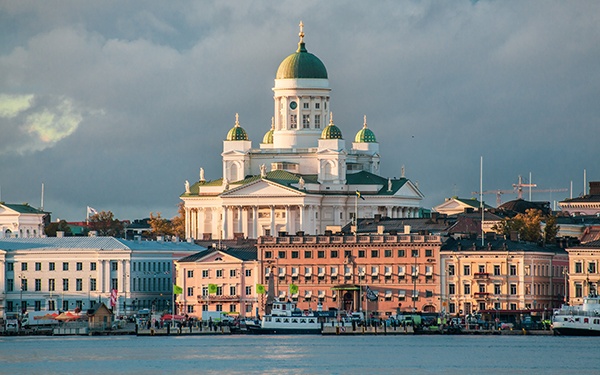
The Finns are a very relaxed, easy going bunch who are very social, accepting, and keen to make new friends — no matter where in the world they are from — although they’re not big on unnecessary small talk.
They also have a strong sense of national identity and are particularly proud of their country’s sporting achievements.
Aside from being invited to the sauna (be prepared to get naked in front of mixed sex groups) or friendly gatherings in people’s homes, expect to take part in watching or playing sporting events as part of your social routine. Finnish favourites include walking, cycling, jogging, hiking, swimming and Formula 1.
Summer brings a wealth of outdoor fun such as awesome music festivals, huge open air markets and fairs, and plenty of opportunity for revelry!
Spring is the time to descend on the slopes and ski your heart out — it’s a very popular Finnish pastime.
English is widely spoken throughout the country, which makes settling in much smoother for expats.
Getting Around
Finland is sparsely populated, but there are nevertheless good air, rail, train and bus networks for getting around.
The train network has good coverage across the entire country. Trains are comfortable and clean and there are sleeper cars available for long distance journeys. Travelling by rail in Finland can be a real pleasure, as train routes are very scenic. The most expensive trains are the high speed trains and fast intercity trains, but are still quite affordable. An 80km journey on a high speed train shouldn’t cost you any more than around £20. Discount rail passes are available if you’re planning on doing a lot of travelling by train.
27 airports in Finland provide a good range of domestic flights, with Finnair being the main carrier. Prices for flights vary, but it’s worth bearing in mind that multi-leg flights give much better value for money than one way tickets.
Buses are another good way to travel — they’re inexpensive and there are routes reaching far across the country, particularly in northern areas. One way tickets can be bought on board the bus, but for more convoluted journeys you should book your tickets in advance at travels agencies and bus stations.
When it comes to urban travel, Helsinki is currently the only Finnish city to have both tram and metro systems. Elsewhere travel by bus or taxi is the norm. Buses are reliable and affordable, but taxis can be expensive, especially in the evenings and at weekends.
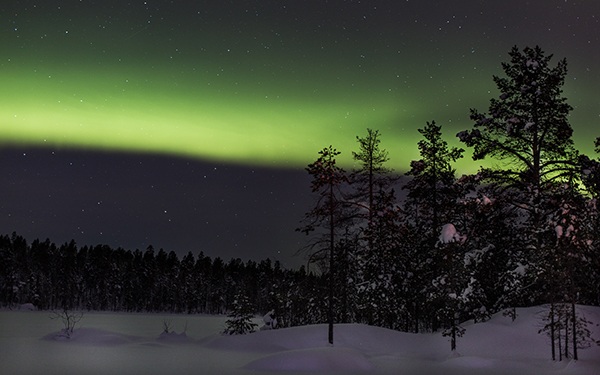
Driving in Finland
Driving in Finland is safe, simple, and picturesque.
Cars drive on the right hand side of the road, and road quality is generally good, although in more remote and forested areas there is always the risk of reindeer and elk wandering onto the roads — so be aware.
When you need to fuel up don’t be surprised if there is no one manning the pumps as most petrol stations can be operated using bank cards or cash.
You need to be 18 years old to drive a car here, and driving with your UK license is sufficient, there’s no need (at the moment) for an international drivers license.
When driving in the colder months the roads are kept clear, but drivers are advised to change their tyres to studded winter tyres.
Traffic jams are rare, but do expect your journey to take a little longer if you’re driving around the city as speeds are restricted and there are a lot of roundabouts to negotiate.
Hiring a car is a simple process and there are many well known international car hire companies operating throughout the country in major towns and cities.
The general speed limit in Finland is 50 km/h in built-up areas and 80 km/h outside. On motorways it is possible to drive at up to 100 km/h in the summer and 120 km/h.
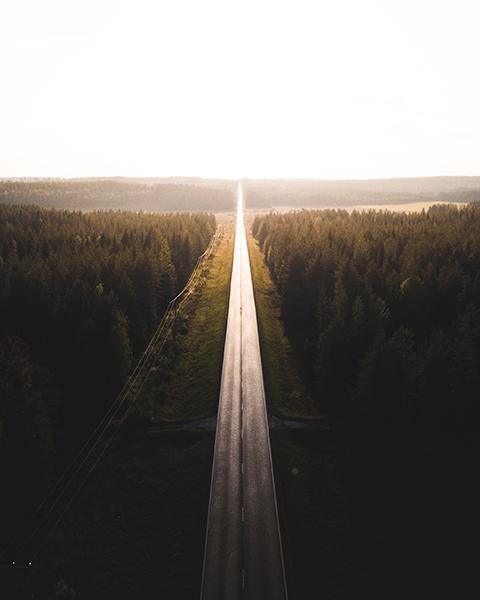
Weather in Finland
Four distinct seasons dictate the weather in Finland. Spring and summer are short, but in summer the sun barely sleeps, giving rise to what’s known as ‘white nights’, and in certain areas doesn’t set at all.
The average temperature in the summer (the summer months in Finland are June, July and August) is about 20°C in the south of the country and 15°C in the north, but peak summertime often brings temperatures of over 25°C.
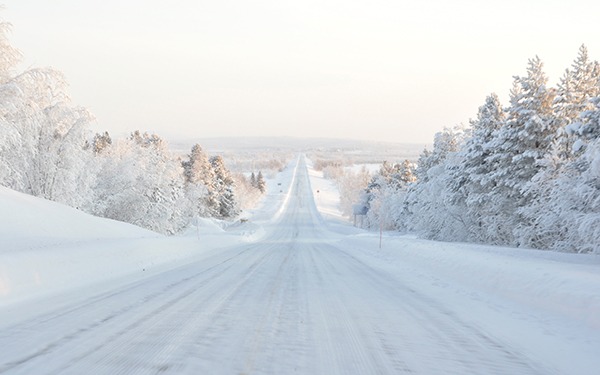
In autumn the chill starts to creep in, but days are still pleasant — although they are often windy and rainy — and this is a good time for hiking in the forests.
Winters (December through to February) are long, dark and cold, with plenty of snow covering the entire country for months on end and temperatures at below freezing, sometimes dropping to as low as -10°C to -20°C in the south and a bone chilling -30°C in the north.
Cost of Living in Finland
Lifestyle
The cost of groceries depends largely on whether they have to be imported or not. Bananas for example are 50% more expensive than in the UK, but eggs and locally produced produce is usually cheaper.
Transport and fuel costs are more affordable than in Britain.
Utilities such as water, rent, internet, and heating are around 1/3 cheaper.
Clothing can be a little on the pricey side — particularly big name brands like Nike and Levis.
When it comes to going out and having fun restaurants, fast food outlets and cafés are priced similarly to those in the UK.
Here’s a deep dive into the cost of living in Helsinki:
Rent
Renting a property in Finland is usually done directly with a private landlord, and prices can often be high — particularly as there is a shortage of accommodation in metropolitan areas.
Municipal apartments are less expensive. Properties are often rented without lights, carpets, or curtains so be prepared to buy your own.
Helsinki is Finland’s most expensive city, and rental costs here can be as much as the equivalent of around £1700 per month for a small apartment in a good area.
There are no restrictions on foreigners buying property in Finland provided they have residency rights, and many people choose this option if staying long term, rather than renting.
Healthcare
Finland has a national health service healthcare system in place which is available to foreigners from other EU countries provided that they have right of residence and are working, and anyone who has been living in the country more than 4 months is legally required to register.
Just like in the UK, once registered in the system, a regular amount will be automatically deducted from your monthly earnings to cover healthcare costs.
While for the most part the system is, relatively, efficient there are increasing concerns regarding underfunding leading to long waiting times and lowered standards of care.
As as result increasing numbers of British expats living in Finland are opting for private healthcare. However even if you choose to pay the extra for private medical care, as long as you are registered with the national health insurance system and have a KELA card a proportion of your medical fees will be reimbursed.
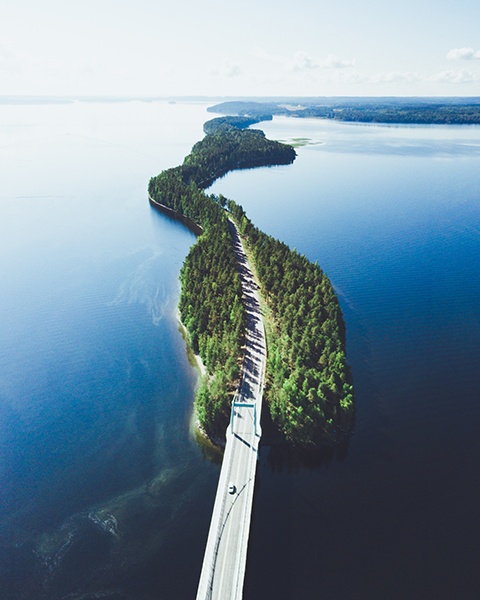
Schooling
When it comes to education, Finland excels itself. Schooling is to a very high standard and is state schools are free at all levels of education.
Much the same as in the UK, kids are required to complete their education up until the age of 16, after which time they may apply for post comprehensive education in upper secondary schools or vocational schools.
University education for foreigners from EU countries is totally free with no tuition fees to pay which makes Finland a fantastic choice for families with older children.
There are also numerous international schools to choose from if you would prefer your child to attend a school with a curriculum more similar that that in the UK, some of which are run by the state and therefore free, and some of which charge tuition fees, with costs varying depending on the establishment.
Popular Areas for Brits
Helsinki
Clean and pleasant, the neat streets of coastal Helsinki are lined with attractive neoclassical buildings.
This pretty and practical city boasts over 100km of shoreline with views out across to the 300 or more tiny islands dotting the ocean.
The Finns are pioneers of style and design, and there are a huge selection of excellent museums and galleries in which to lose yourself, and there is shopping galore for hardcore fashionistas.
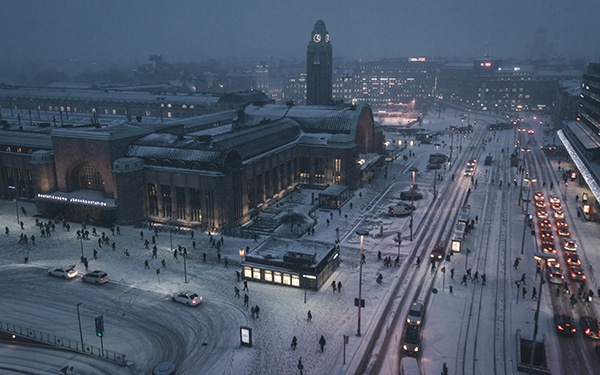
The burgeoning food scene has given rise to the establishments of some of the finest restaurants in Finland, many of which are Michelin starred. The vibe is vibrant yet laid back, the locals are friendly, and life is good in Helsinki.
Tampere
Whilst its nickname of the ‘Manchester’ of Finland may not seem glamorous, it’s to be taken in the most positive sense. Tampere is where a history of industrialism combines with edgy new culture to create a unique and diverse city which is charmingly quirky and endlessly fascinating.
Located between two beautiful scenic lakes, the city occupies an extraordinary position among nature.
Factories have been converted into high end apartments, and old warehouses are now home to cool boutiques, galleries, cosy bars, restaurants, and cute cafés.
Espoo
Blessed with enchanting views of its surrounding archipelago, Espoo sits just on the edge of Helsinki. Green spaces adorn this city and it seamlessly combines modern life with nature.
It’s also a major business hub with many international companies having headquarters here, which makes it popular with expats.
Throughout the year Espoo has a comprehensive cultural calendar, from international film festivals to modern art and jazz events.
Turku
The one time Finland capital on the southwest coast was devastated by a great fire in 1827, but has risen from the ashes to become a thriving, history-rich cultural city with scintillating nightlife and a lively student population.
The River Aura runs through the centre of the city, with colourful houses and tress on the river banks making for a pretty picture.
Raseborg
The magnificent ruins of Raseborg castle are just one of the historic points of interest in this ancient trading port town, and the Old Town dating back to the 1500s is still very much part of the new city.
Raseborg occupies and enviable position on the coast near the Ekenäs Archipelago National Park — a paradise for nature lovers which in summer is best explored by kayak.
Oulu
It’s hard not to fall in love with Oulu in the north of Finland. Once an ancient trading centre with a port at the mouth of the majestic Oulujoki River, Oulu has grown up to become a cosmopolitan metropolis offering culture, food, and bars and clubs in abundance.
Arguably Finland’s cultural capital Oulu hosts a huge number of festivals and concerts each year, and the renowned university feeds the city with new blood, keeping it buzzing with energy and entertainments.
Lappeenranta
Finland’s second most visited town, Lappeenranta’s main attraction is Lake Saimaa — the largest lake in Finland — on whose shores it was constructed.
Finland ‘shares’ the city with Russia, and popular day boat trips run across the border between the two countries.
Lappeenranta has a history as an exclusive spa town, and its also where you’ll find Finland’s oldest orthodox church located within the scarlet Fortress of Lappeenranta.
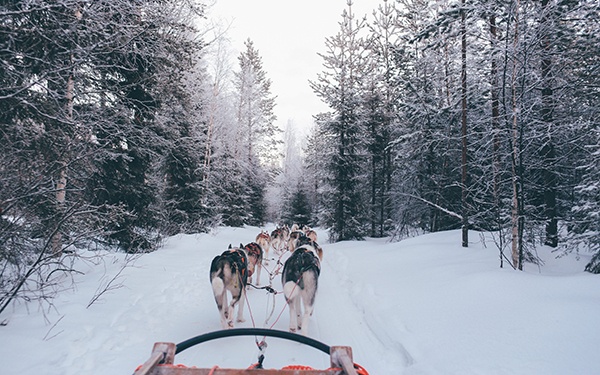
Jobs in Finland for British Expats
With an economy on the way up and unemployment rates seeing a significant decrease, job opportunities for British expats in Finland are on the rise.
That said, finding work in Finland can still be a challenge.
To improve your chances, having at least a basic grasp of the Finnish language is essential. Whenever possible start job hunting before you move out here.
If you have the means and spot a good opportunity, it is fairly easy to set up your own business in Finland as a foreign national, and be self employed. In-demand sectors include healthcare, social services, construction, mechanical engineering, commercial sales, and civil engineering.
Still considering a move to Finland from the UK?






